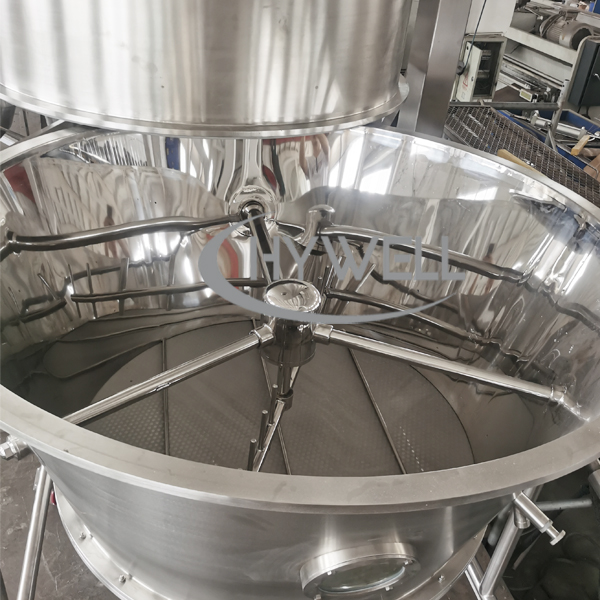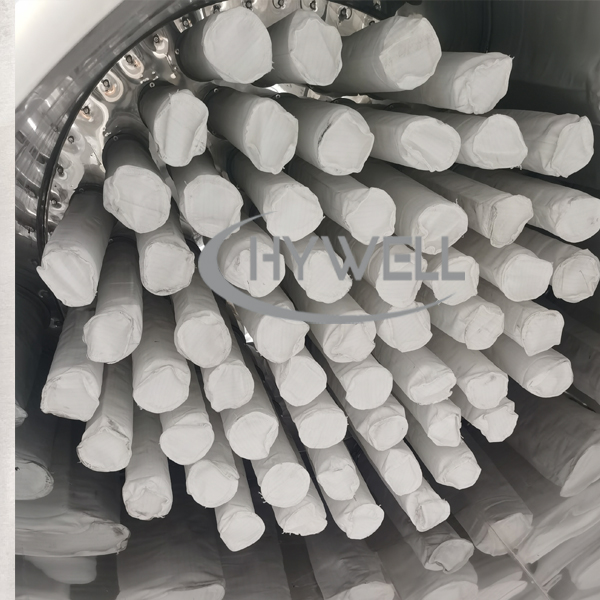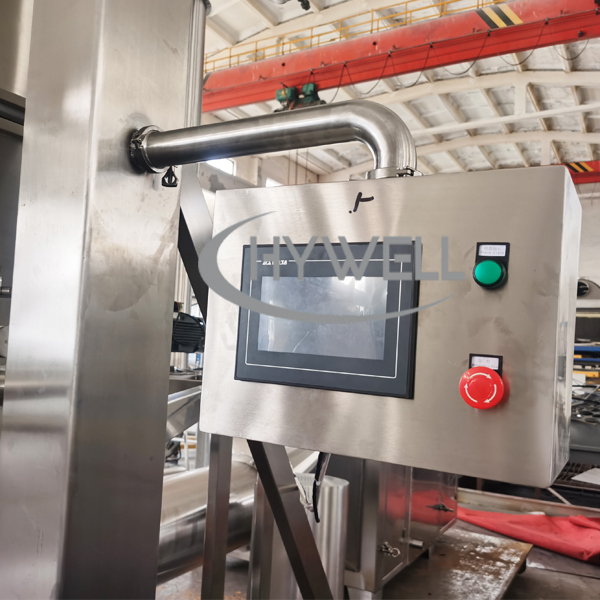Views: 23 Author: Site Editor Publish Time: 2022-08-17 Origin: Site
Fluidized bed dryers are widely used in various industries for the efficient drying of granular materials. This article aims to provide a comprehensive understanding of fluidized bed dryers, including their working principle, advantages, applications, influencing factors, maintenance, and comparisons with other drying methods.
Fluidized bed dryers are a type of drying equipment used to reduce the moisture content of various materials. The working principle of fluidized bed dryers involves a bed of solid particles, such as sand, that is fluidized by hot gas. This creates a fluid-like state that enables the material being dried to move around freely and ensures uniform drying. One of the main advantages of fluidized bed dryers is their ability to handle a wide range of materials, including powders, crystals, and granules. They are also known for their high thermal efficiency, which reduces energy consumption and operating costs. In terms of applications, fluidized bed dryers are used in many industries, including pharmaceuticals, food processing, and chemical manufacturing. The performance of fluidized bed dryers is influenced by a number of factors, such as the size and shape of the bed and the velocity and temperature of the gas. Proper maintenance is also crucial to ensure optimal performance and prevent breakdowns. When compared to other drying methods, such as rotary dryers and spray dryers, fluidized bed dryers offer several advantages. For example, they are more energy-efficient and can handle a wider range of materials. However, they may not be as effective for certain types of materials or for high-capacity drying operations.
An old Thailand customer of Hywell Machinery Co., Ltd is placing a new order in 2022 to purchase a vertical fluid bed dryer. Old customers have ordered our company's drying machine and granulators many times, indicating that customers have recognized the quality of our industrial dryer and granulation machine. The vertical fluid bed dryer is heated by steam, and the contact material is made of 316L stainless steel. The air inlet of the fluid bed drying machine is equipped with primary and medium-efficiency filters, as well as high-temperature and high-efficiency filters. The material truck is equipped with a material mixing system to prevent material agglomeration. After the production, assembly, and testing of this vertical fluidized bed dryer is completed, it is packed in wooden boxes. The containers are loaded at the Hywell factory and sent to Shanghai port.
The GHL high shear granulator connect with the vertical fluidized bed dryer that make the Solid Dosage Granulation Line.

Materials tank

Cloth filter

Control panel
Hywell machinery manufactures premium quality fluid bed drying machines. It export fluid bed drying machine to our clients in the USA, Ukraine, and Vietnam.
Our fluid bed drying machine is one kind of machine in a fluid bed drying system. A fluid bed drying machine principle is the optimal method for controlled, gentle, and drying of wet solids.
Hywell machinery Provides Free Technical Support and Installation Service of Fluid Bed Drying System to our Esteemed Clients
We also provide consultancy and technical support services related to the fluid bed dryer system to our clients without any additional cost. We design and chart the whole pharmaceutical production line so that our customers can have the best production efficiency.

Touch screen

Heater chest

Loading container
Hywell machinery is proud to serve many pharmaceutical companies in the world. The main reason for the higher number of retained clients for our fluid bed dryer machine is that we provide full customization in the design of fluid bed dryers for different kinds of processes for different companies.
Our Fluidized bed dryer systems are made of stainless steel, contact product part of the vertical fluidized bed dryer parts is made of stainless steel 316L material, and another part is stainless steel 304 with a 3-4mm thickness which ensures a higher lifetime and value for our esteemed customers.
Fluidized bed dryers are a type of industrial dryer that suspends solid particles in a fluidized state, allowing for effective drying through direct contact with hot air. The fluidization process creates a bed of particles that behave like a fluid, enhancing the heat and mass transfer between the drying medium and the material being dried.
In a fluidized bed dryer, the solid particles are initially stationary. As the hot air flows upward through the bed, it passes through the spaces between the particles, exerting an upward force. When the upward force exceeds the gravitational force acting on the particles, they become suspended and start to behave like a fluid. This state is known as fluidization.
There are different types of fluidized bed dryers, including batch fluidized bed dryers and continuous fluid bed dryer machines. Batch dryers are suitable for small-scale operations, while continuous dryers are designed for larger production capacities. Additionally, there are static fluidized bed dryers and vibrating fluidized bed dryers, each offering specific advantages depending on the material being dried.
A typical fluidized bed dryer consists of several components, including a drying chamber, an air distributor, a heat source, a blower, and a particle discharge system. The drying chamber contains the fluidized bed where the drying process occurs, while the air distributor ensures uniform air distribution across the bed. The heat source provides the necessary heat energy, and the blower circulates the air. The particle discharge system allows for the controlled removal of the dried material from the bed.
Fluidized bed dryers offer several advantages over traditional drying methods, making them a popular choice in various industries.
Fluidized bed dryers provide excellent heat and mass transfer characteristics due to the intimate contact between the drying medium and the material being dried. This leads to efficient and uniform drying, minimizing the risk of over-drying or under-drying. The fluidized state of the particles ensures that each particle is exposed to hot air, resulting in rapid and thorough drying.
The fluidization process in fluidized bed dryers allows for efficient heat transfer between the hot air and the material being dried. The large surface area of the suspended particles facilitates quick and effective heat absorption, leading to faster drying times. This improved heat transfer also helps maintain product quality by reducing the chances of thermal degradation.
Compared to other drying methods, fluidized bed drying machines offer significantly shorter drying times. The combination of efficient heat transfer, uniform airflow distribution, and the fluidized state of the particles accelerate the drying process. This is particularly beneficial for industries where fast and continuous drying is essential to meet production demands.
Fluidized bed dryers find extensive use in various industries due to their versatility and efficiency. Some common applications include:
In the pharmaceutical industry, fluidized bed dryers are widely employed for drying granules, powders, and pellets. The precise control over temperature and airflow allows for the drying of sensitive pharmaceutical products without compromising their quality. Additionally, fluidized bed dryers enable the coating and granulation processes, enhancing the functionality and appearance of pharmaceutical products.
In the food processing industry, fluid bed dryers are utilized for drying a range of food products, including fruits, vegetables, grains, and spices. The gentle drying conditions preserve the nutritional content and sensory properties of the food items. Moreover, fluidized bed dryers can be equipped with additional features such as air filtration and sterilization, ensuring hygienic and safe drying processes.
The chemical industry benefits from fluidized bed dryer machines in the drying of various chemical substances, such as polymers, catalysts, and fertilizers. The precise control over temperature, airflow, and residence time allows for the removal of moisture or solvents from the chemical products. This contributes to the production of high-quality chemicals with consistent properties.
Several factors impact the performance and efficiency of fluidized bed dryers. It is essential to consider these factors to optimize the drying process and achieve desired outcomes.
The particle size and distribution play a crucial role in fluidized bed drying. Ideally, the particles should be uniform in size and shape to ensure consistent fluidization and drying. Irregular particle sizes or a wide particle size distribution can lead to uneven drying and reduced efficiency.
The airflow velocity and temperature significantly influence the drying process. The airflow velocity must be carefully controlled to maintain fluidization without causing excessive particle entrainment or bed agglomeration. Similarly, the temperature should be set at an optimal level to ensure efficient drying without damaging the material being dried.
The residence time, or the duration of contact between the material and the drying medium, affects the drying efficiency. It is important to determine the appropriate residence time based on the material properties and desired moisture content. Insufficient residence time may result in under-drying, while excessive residence time can lead to over-drying and potential product degradation.
To ensure optimal performance and longevity of fluidized bed dryers, regular maintenance, and troubleshooting are essential.
Periodic cleaning of the drying chamber and other components is necessary to prevent the accumulation of dust, debris, or product residues. Routine inspections help identify any signs of wear, damage, or malfunctioning parts that may affect the drying process. Additionally, proper lubrication of moving parts and regular calibration of temperature and airflow sensors contribute to the smooth operation of the dryer and ensure accurate drying conditions.
Bed agglomeration occurs when particles stick together, impeding fluidization and reducing drying efficiency. To prevent this issue, it is important to ensure uniform particle size, control the airflow velocity within the optimal range, and avoid excessive moisture content in the feed material.
Non-uniform drying can occur due to improper airflow distribution or variations in particle size and moisture content. Adjusting the air distribution system, optimizing particle size distribution, and monitoring moisture content can help achieve more uniform drying results.
Excessive airflow can cause particles to be entrained and carried out of the dryer. This can be addressed by adjusting the airflow velocity, installing appropriate particle retention systems such as cyclones or filters, and ensuring proper sealing of the drying chamber.
Clogging of the drying chamber or air distribution system can occur due to the presence of fine particles or sticky materials. Regular cleaning and inspection, as well as the use of suitable filtering systems, can help prevent clogging issues.
While fluidized bed dryers offer numerous advantages, it is important to consider other drying methods to determine the most suitable option for specific applications. Here is a comparison with some commonly used drying methods:
Tray dryers involve placing the material on trays and subjecting it to hot air. While tray dryers are simple and cost-effective, they may have longer drying times and less efficient heat transfer compared to fluidized bed dryers.
Rotary dryers consist of a rotating drum where the material is fed and exposed to hot air. They are commonly used for bulk drying applications but may have limitations in terms of heat transfer efficiency and uniformity compared to fluidized bed dryers.
Spray dryers atomize the liquid feed material into fine droplets, which are then dried by hot air. Spray dryers are effective for producing powders and fine particles but may have higher energy consumption and lower heat transfer efficiency compared to fluidized bed dryers.
Fluidized bed dryers are versatile and efficient drying systems used in various industries. Their ability to achieve rapid and uniform drying, along with the advantages of improved heat transfer and reduced drying time, make them a preferred choice for many applications. By understanding the working principle, advantages, applications, influencing factors, and maintenance of fluidized bed dryers, industries can optimize their drying processes and achieve high-quality dried products.
Fluidized bed dryers come in a wide range of sizes, with capacities varying from small-scale units suitable for laboratory or pilot-scale operations to large industrial-scale dryers capable of handling several tons of material per hour.
Yes, fluidized bed dryers can handle sensitive materials effectively. The precise control over temperature and airflow allows for gentle drying, minimizing the risk of thermal degradation or damage to the sensitive materials.
Absolutely. Fluidized bed dryers are widely used in large-scale industrial applications across various industries. Their efficiency, uniform drying, and ability to handle a wide range of materials make them suitable for high-volume production requirements.
To optimize the drying process in a fluidized bed dryer, ensure proper particle size and distribution, control airflow velocity and temperature, and adjust the residence time based on the material properties. Regular maintenance, cleaning, and inspections include routine cleaning and inspection, lubrication of moving parts, and calibration of temperature and airflow sensors. Additionally, troubleshooting common issues such as bed agglomeration, uneven drying, particle entrainment, and clogging can help maintain optimal performance. Finally, it is important to compare fluidized bed dryers with other drying methods such as tray dryers, rotary dryers, and spray dryers to determine the most suitable option for specific applications.